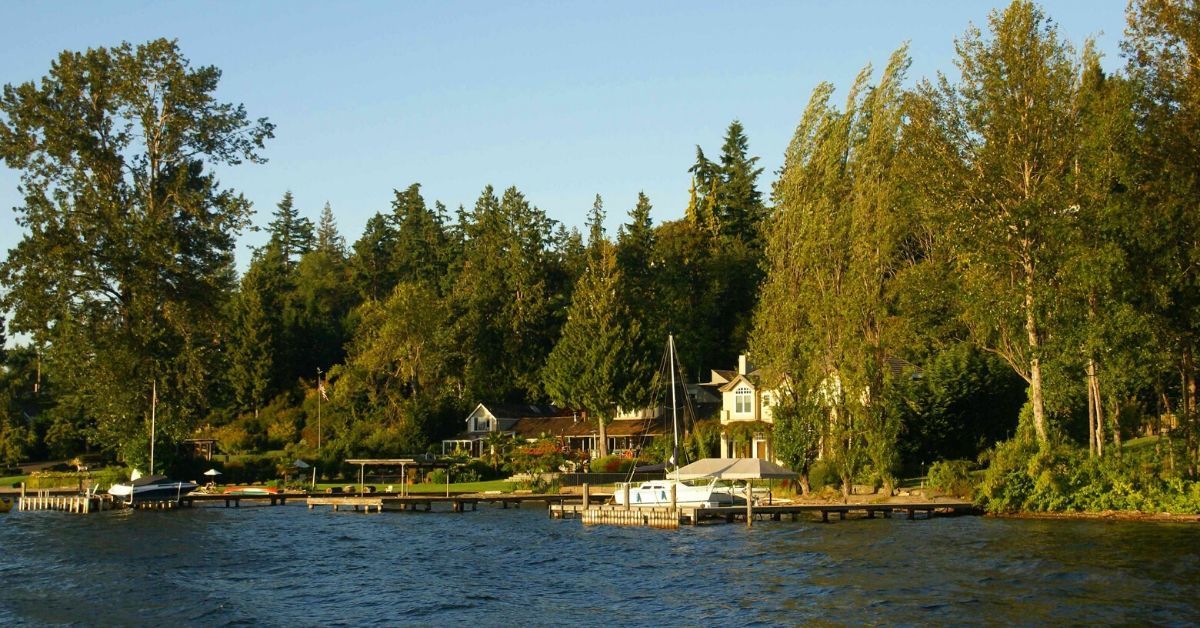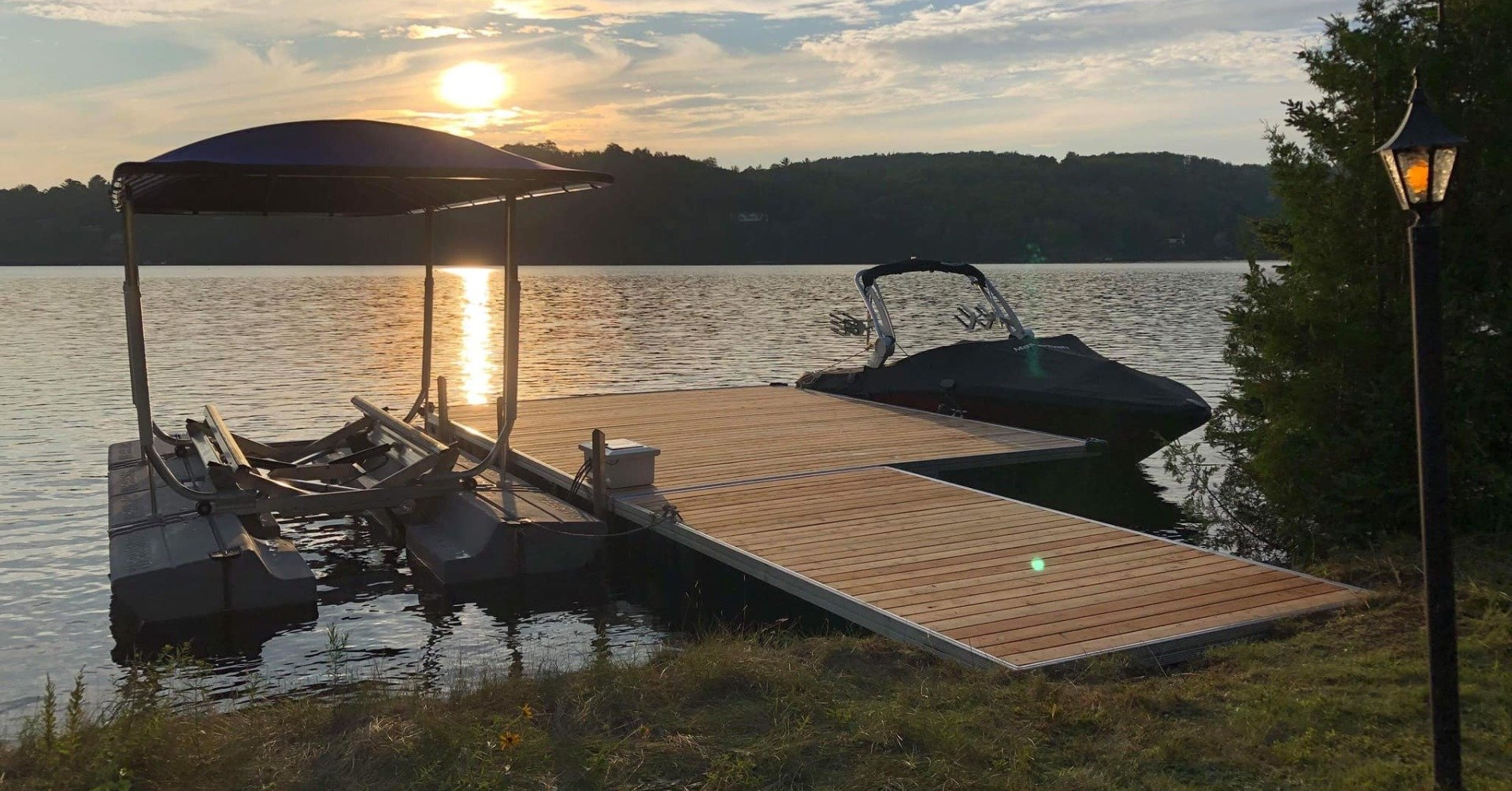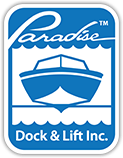Tis and advice to choose and install and maintain your docking system.
Here are some tips for making the right choices for the purchase, installation and maintenance of your docks for your boats and watercraft.
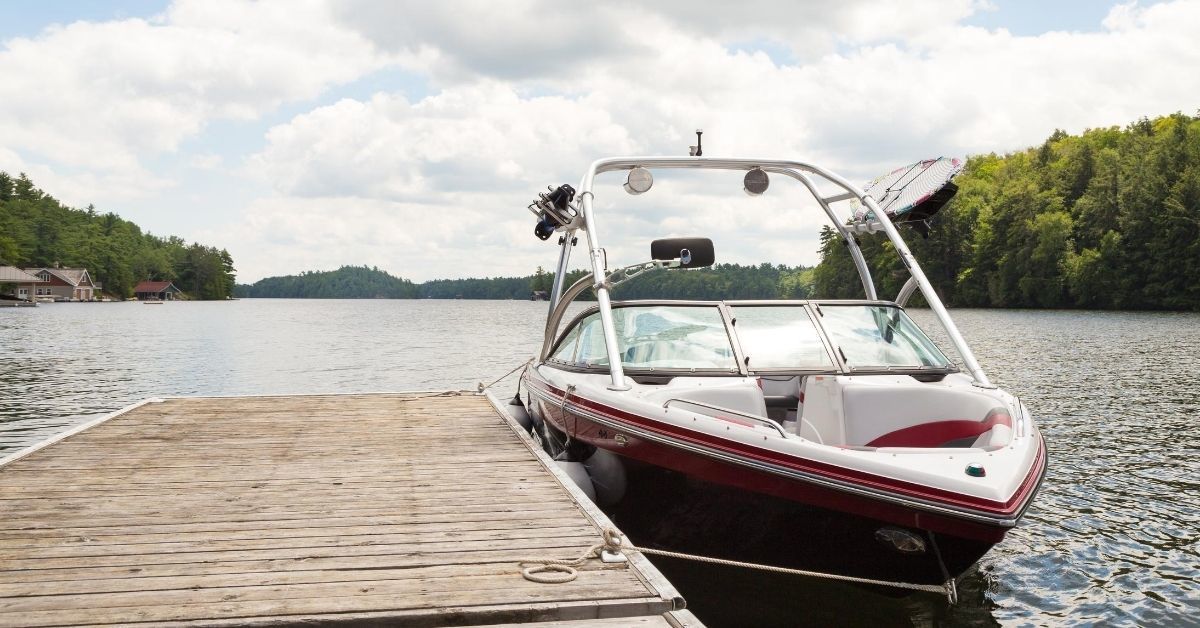
#1 - Clean properly and often If you pressure clean your dock once a month, you’ll ensure to remove any dirt and debris. You don’t want to clean it too hard (maintaining the integrity of the decking is crucial), so consider hiring a professional to take care of this every month or whenever works best for you. #2 - Take pictures once a month Pull out your phone and snap a few pictures of your dock from different angles every month. Compare your new pictures to those from previous months. You're more likely to notice changes or any red flags in pictures and can take care of issues ahead of time. #3 - Schedule dock inspections regularly We all know life gets busy. Putting a reminder in your calendar for dock maintenance once a month means you’ll have time to thoroughly inspect, clean, take pictures, etc. This also includes looking for any loose boards, rotting boards, nails or screws sticking up, or any other structural issues. Ladders should be inspected regularly as well. Plan to fix these issues as soon as possible to prevent further problems. Time gets lost in the shuffle, by setting a time you're less likely to forget and more likely to make it a high priority. #4 - Protect the corners and sides Even if you’re a great captain, wind or some other uncontrollable factor may get the best of you. Installing dock bumpers protect both your boat and the dock from damage. The bumpers come in several styles and go a long way to protect your investment. #5 - Safety first! Safety is one of the most important factors in maintaining the integrity of your boat dock. You need to think whether your dock will be used for sunbathing, fishing, or entertaining. If you're fishing one day and planning to entertain the next, ensure there are no stray hooks or fishing poles left on your dock waiting to be stepped on. It's also important to keep a life ring on hand attached to your dock in case of emergency situations. Keeping your boat dock in optimal condition by following these useful tips means you’ll be able to enjoy a safe, reliable and great-looking dock for years to come! About MultiKit Multikit was borne out of the fusion of several passions: wakeboarding, wakesurfing, boating and construction. If you're a water sports enthusiast, you know how important it is to moor your boat and we understand you. For more than 20 years, we have carried out hundreds of dock projects of all kinds and for all types of boats for residential applications as well as for marinas. We are passionate about our work and we are only satisfied when you are. Boating is a passion and our expertise in designing systems and installing your docks is our business.
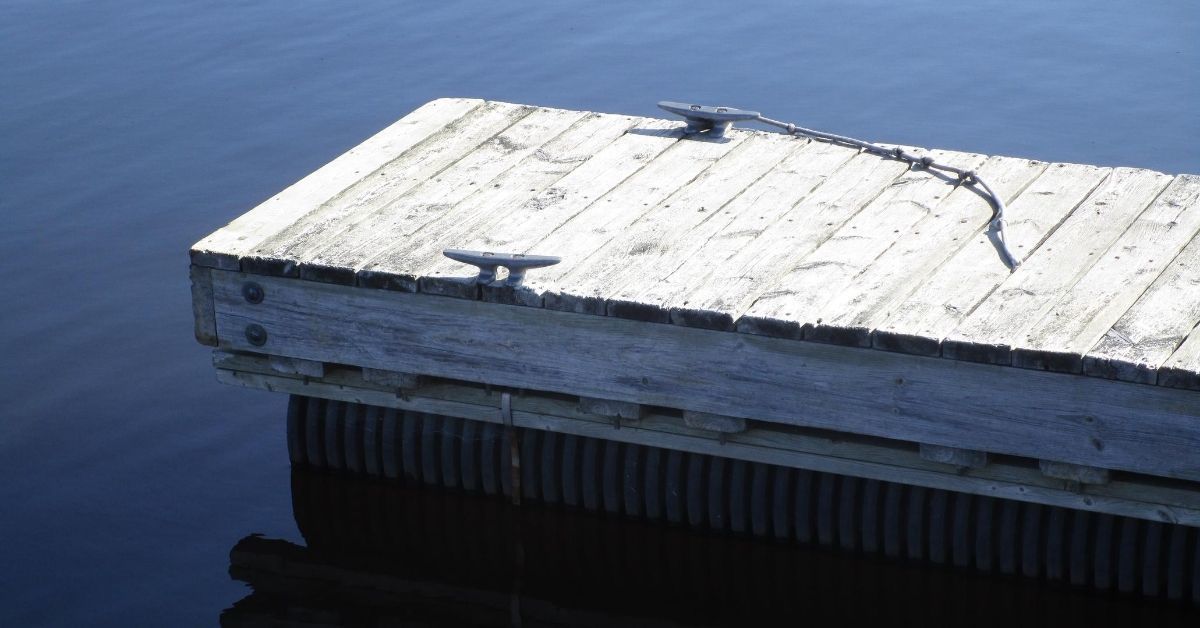
This said, it all depends on the type of dock you are looking for, so let’s explore both options. Docks range from very simple structures that may cost a couple thousand bucks to extremely complex systems that cost several thousand. What you decide to build depends on how handy you are, what type of shoreline and lake bottom you’re faced with, and your budget. Here are 5 key elements to consider before you start building your boat dock yourself 1. Be honest about your handyman status A ‘’kit’’ dock can be a budget-friendly option, if you have some skills, lots of time and an amenable shoreline and water depth. These do-it-yourself kits, which simply assemble at the shoreline and almost drop into place, are becoming more popular. If you don’t feel confident in your handyman skills, or if you lack time to do the job, consider hiring a professional to design and build your dock. The up-front costs of hiring a professional will be higher than buying materials and building it yourself, but you will reap many benefits such as a dock built right for many years, and you’ll be able to enjoy your weekends, instead of spending them measuring, hammering and drilling. 2. Your lake bed and depth Even if you’re handy, some limitations may stop you during your project. The configuration of your lake’s bottom combined with your shoreline layout will dictate whether you’ll need help with the design, layout and installation of your dock. Sandy and flat lake bottoms will not give you trouble. Same if the depth variation from the shoreline to the end of your dock is small. Most kit docks have enough adjustability to accommodate this. However, if you’re faced with a rocky lake bottom, or if the variation from the shoreline to where the end of the dock will be is more than a few feet, you may need to call in the experts. In some areas, lakes are drawn down and refilled from time to time, so you may need a dock that you can adjust regularly to the varying depths. A floating dock would be ideal in this situation. 3. Materials and construction Most standard kit docks will offer aluminum (for legs and framework) and synthetics, such as plastic (for decking material). Using these types of materials offer some advantages (over wood) in durability, strength and weather resistance. They are also easy to install and remove. Without a wheel system or help to carry the load, a wood dock is impossible to install and remove alone. If you choose a wooden dock, you’ll need to check local regulations regarding chemical treatment and lake concerns; some municipalities prohibit the use of chemically treated wood due to the fear that it will contaminate lake water. Your hardware should always be galvanized for corrosion resistance; if it’s not in your budget, choose stainless steel. 4. Design and layout The type, size, shape and location of your dock will depend on your shoreline and lake-bottom configuration, as well as municipal rules and regulations. It’s always best to check with your local municipality about existing regulations, whether you’re repairing an existing dock or replacing it, and especially if you’re planning an expansion or complete replacement. If you violate some rules, you may be subject to fines, or worse: you may have to tear down what you’ve built. The type of boat you are playing with may also vary the configuration and length of your dock. To dock a boat any bigger than a PWC or fishing skiff, you’ll need at least a few feet of water depth, and that could mean extending your dock out more than you originally thought. A typical stern-drive boat needs a few feet of depth at the stern so the outdrive won’t ground on the lake bottom. A lighter outboard rig can usually get by with less depth, but 2 feet should be considered the minimum. If your shoreline is very shallow and local regulations do not allow you to extend the dock out, you may have to consider dredging (removing sediment from the lake bottom to increase depth). This is a relatively simply technique, but depending on the local regulations and environmental concerns, it can turn quite complex. 5. Winter worries In Canada, most lakes freeze, so a solid winter plan is a must. Many kit docks are designed to be removed in the fall and reinstalled in spring. A pipe dock needs to be removed, while a floating dock should either be removed or relocated to a sheltered spot. The only dock that remains in place is a permanent dock, which, due to its construction, is able to withstand a certain buildup of ice. However, in an area where there may be a larger buildup of ice, it might be necessary to install de-icers around the dock legs. These de-icers oscillate the water in order to reduce the buildup of ice and prevent damage. Our advice is that when it’s time to construct or repair your dock, don’t go it alone. Without a professional, your dock project will take longer and be much more aggravating than it needs to be. About MultiKit Multikit was borne out of the fusion of several passions: wakeboarding, wakesurfing, boating and construction. If you're a water sports enthusiast, you know how important it is to moor your boat and we understand you. For more than 20 years, we have carried out hundreds of dock projects of all kinds and for all types of boats for residential applications as well as for marinas. We are passionate about our work and we are only satisfied when you are. Boating is a passion and our expertise in designing systems and installing your docks is our business.
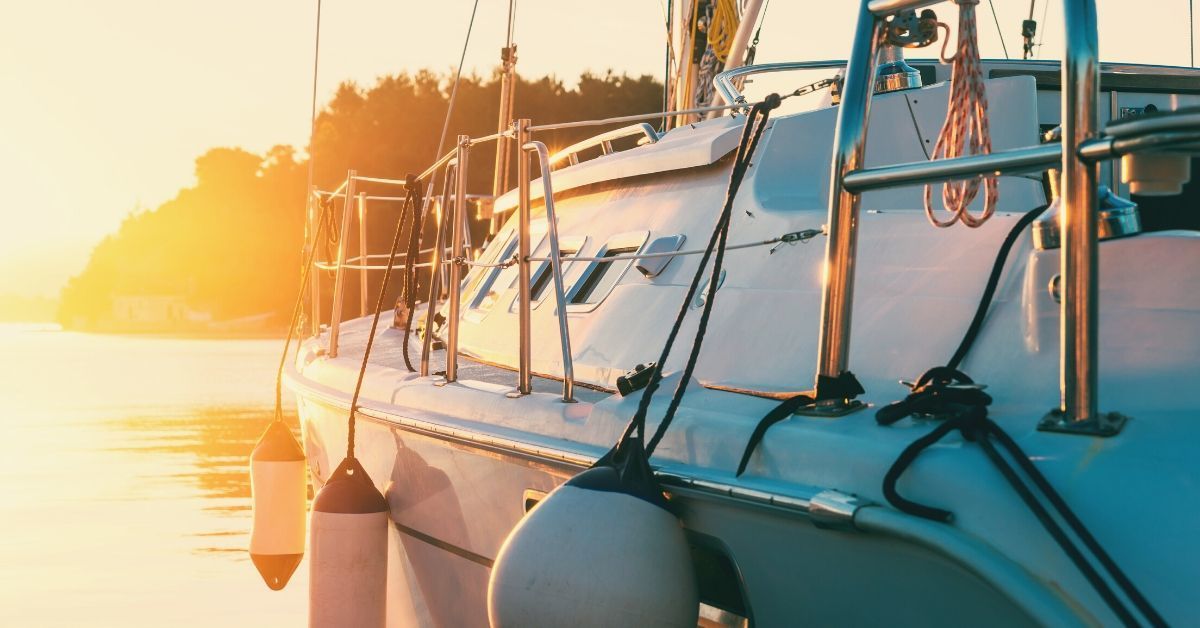
The boat, obviously, is a no-brainer. You have to have a boat in order to participate in the sport of boating. But your most important piece of equipment is your boat trailer. It’s essential that you match your boat trailer to your boat. This will depend on the size of your boat mainly, but there are other considerations to be thought about as well. What is the size of the vehicle you will be using to tow your boat on the trailer? There are some lighter weight trailer models that can accommodate vehicles with less horsepower. Ideally, you’ll want a four-wheel drive truck that can handle both the boat and the trailer easily. But if you just have a small truck, look into a lightweight aluminum trailer that is easily towed by a smaller truck. The type of boat you choose is also dependent on your vehicle. Most people choose their vehicle first and then their boat. If all you have is a smaller truck with little horsepower, you won’t want a 30 foot power boat traveling behind you. Handling will be difficult, and you run the risk of harming others on the roadway if you don’t pay attention to this big detail. So, you’ve got your boat and you’ve got your trailer, what other type of equipment will you need in your boating adventures? First, you need to have all the required safety equipment as outlined by the Canada Coast Guard. That includes a fire extinguisher, life jackets for all people on board, some type of sound emitting device (your mother-in-law doesn’t count) and accurate lighting for boating at night. This boating gear is required by law and every boat must have them. It’s a good idea to outfit your boat with a radio so you can communicate with the shore. At the very least, you should have some type of cell phone or two-way radio in case of emergency. You can also put a stereo in your boat for personal enjoyment while on the water. For docking and anchoring, you’ll need an anchor, of course, as well as line to attach the anchor. You’ll also need docking line so you can tie up at the pier. You’ll also want some dock bumpers to avoid doing damage to your boat when mooring. These are like blow-up buoys that hang from the side of your boat. When it comes to activities with your boat, the gear you need is probably a little bit obvious. If you will be water skiing, you’ll need the skis as well as a strong tow rope. For inner-tubing, get a good tube that can hold more than one person. It’s also a good idea to get a tube with handles. You need a tow rope to inner tube as well. If you will be fishing, your boating gear will be a little different. Of course, you’ll need your fishing gear – rods, reels, bait, etc. But you will also need someplace to keep your catch like a water well or bucket. You should also have someplace to store your gear when it is on board. A good navigation system is considered by some people an essential piece of boating gear. You can find a good GPS system for not too much money, and it can be a life saver should you find yourself lost on the water. At the very least, you need a good compass so you don’t lose your way. There are literally hundreds and hundreds of items that people consider essential boating gear. You have to choose which you really need and that you have to have. Boating gear is available in sporting goods stores as well as online, and the variety that is available will get your boat outfitted in style!
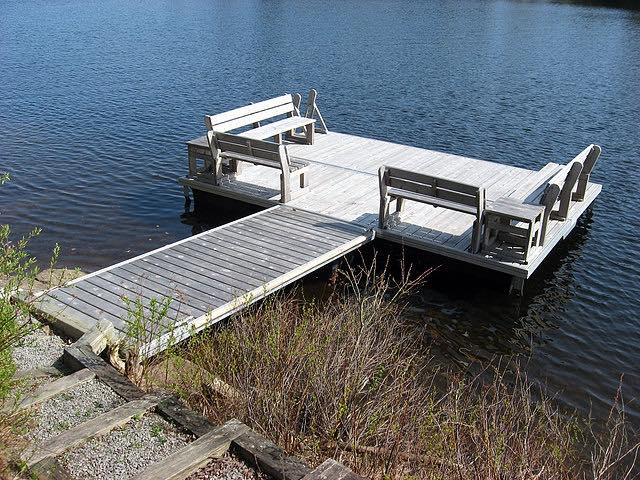
They can have very important functions to the overall enjoyment of the dock. Here are 9 of the most common dock accessories that will allow you to get the most enjoyment out of your dock. Dock Furniture Stylish and practical dock furniture allows you to enjoy the water even if you’re not on your boat. Dock furniture options include: benches, chairs, tables, umbrellas, etc. You can usually choose different materials and fabrics to customize your furniture. Cleats Dock cleats are a very important accessory because if you have a boat, you're going to need to tie it up. Boat and dock cleats provide convenient locations to secure lines quickly and easily. There are many different types and arrangements of boat cleats available to customize your mooring experience. Not only do cleats ensure that docking and undocking is safely maneuvered it also ensures that the watercraft remains as steady as possible while passengers board and unboard. A loose dock line can allow the watercraft to sway further away from the dock and create an unsafe situation for boarding. Bumpers Bumpers are also a must because they they provide impact protection for both your boat and dock. The most common type of bumpers are strong vertical bumpers that can be adjusted to your needs. The hardest part of installing bumpers is to know where to place them. They need to be installed where the most potential impact will occur. They are a great accessory because they make your dock look better, as well as help you save money on dock and boat repairs. Solar Lights Adding solar charging LED dock lights to your dock will bring it to life at night, as well as secure the use of your dock after the sun has set. By placing lights along the perimeter of your dock, it helps prevent any injuries from falling off of the dock in darkness. Ladders If you love to swim from your dock, a ladder will allow you fully enjoy your dock in a safe manner. Some ladders even have flip up attachments, which means you can remove them from the water when you’re not using them. It’s useful because it keeps your steps clean and adds years to the life of the ladder. Dock boxes If you use your dock for fishing, loading it with toys to enjoy on the water or just to hang out, a dock box is a great way to keep all the things you need close by. Think fishing poles, life jackets, and all the other items you use out on the water. Instead of carrying them from the shed or home, they’re right there in your dock box. Hoses Hoses will allow you to hose down your boat and your dock after fishing or working. They can also be practical in case of a fire. Boat Lifts Boat lifts move your boat out of the water, offering support and protection against wind, waves, and more. More importantly, it gives you peace of mind when you’re away from your cottage for prolonged period of time. If you want to find out more about what a boat lift can do for you, read our article titled Why are boat lifts a good investment? Dock Stereo Systems If you like to use your dock as a platform to enjoy your lake, an outdoor speaker system is perfect to fish, swim or lay out on your dock. The latest models feature Bluetooth for smartphone integration and multiple speakers for larger installations. Be sure to choose a speaker brand known for use in outdoor applications. It will help your unit last longer and it will help keep your guests safe.

Choosing the right type of dock is crucial to ensure full enjoyment of your waterfront, and to make sure you are compliant with your municipality regulations. There are also some key questions to ask yourself in order to determine the best type of dock for you: Here are some questions you should ask yourself: Where do you plan on putting your dock? What is the depth of the water and the condition at the bottom? How many boats will the dock need to accommodate at once? Are there other types of watercrafts such as kayaks, pedal boats or sea-doos that will use the dock as well? Will the water level rise and fall drastically, potentially limiting the dock’s usage? What are the surface conditions of the water? Are you in an area that’s prone to heavy boat traffic or frequent storms? What is your budget? How much are you willing to put into maintaining the dock? Are you planning on installing the dock yourself, or are looking to hire someone to do it for you? Do you want to use the dock as a place to gather with family and friends? There are essentially two types of docks: Floating docks and Stationary docks. Floating docks Floating docks are large platforms often comprised of decking placed over airtight drums, that float on the water’s surface. They also come as pre-built sections that can be attached in a variety of configurations and shapes. Floating docks are versatile because they rise or fall with the water level, helping them adapt to nearly any condition, and ensuring any critical electrical systems attached to them will never be submerged.. They are also ideal solutions for lakes or river beds that are unable to support the installation of a fixed dock (if the water is too deep for example). Floating docks are often considered more practical because of the fact that they often have fewer rules and regulations to follow due to the fact that they don’t damage sediment.
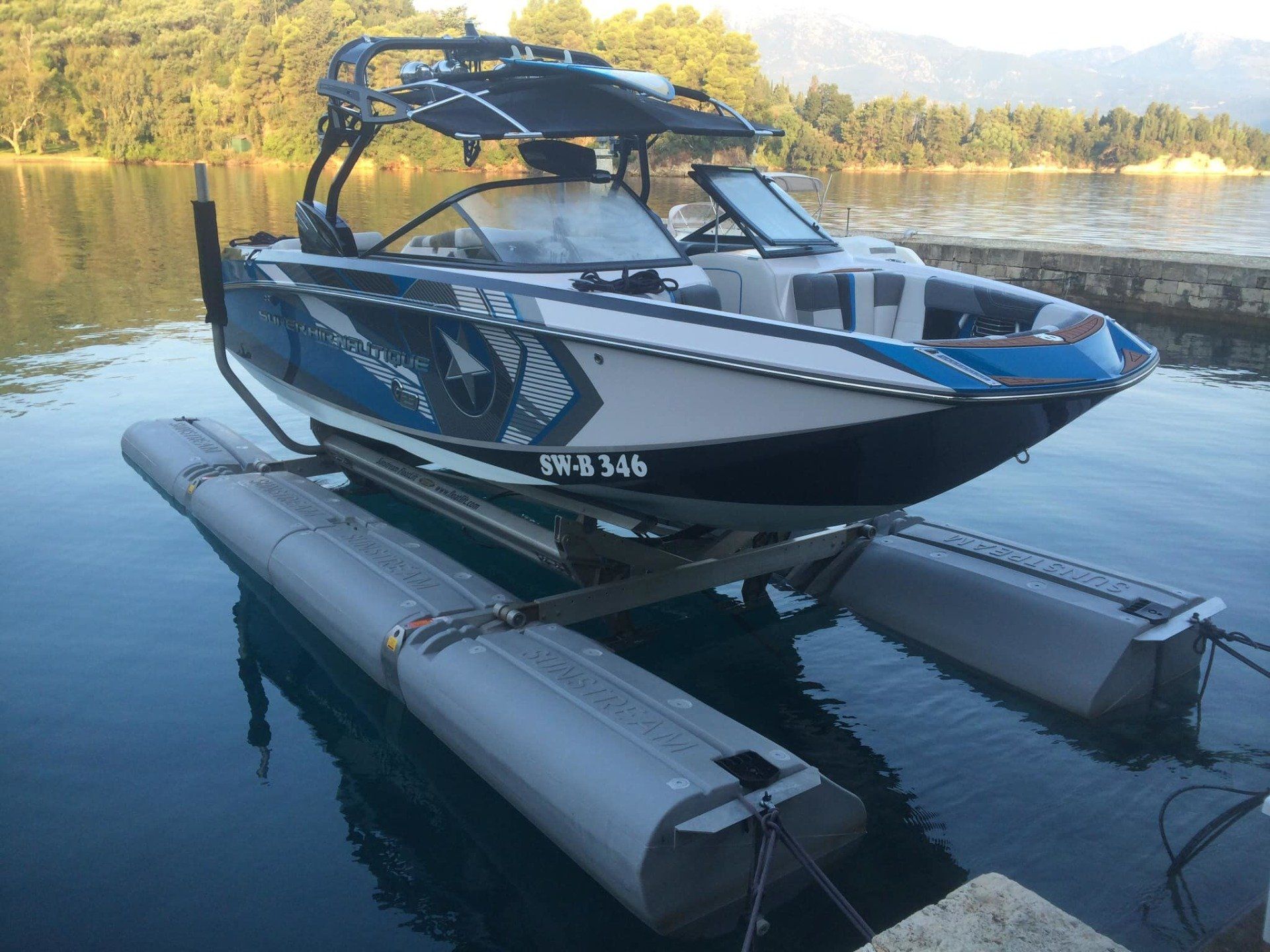
Many new boat owners are surprised to learn that boats shouldn’t always be stored in the water. But more time spent in the water means more maintenance and care required due to deterioration and damage. Boat lifts move your boat out of the water, offering support and protection against wind, waves, and more. More importantly, it gives you peace of mind when you’re away from your cottage for prolonged period of time.


